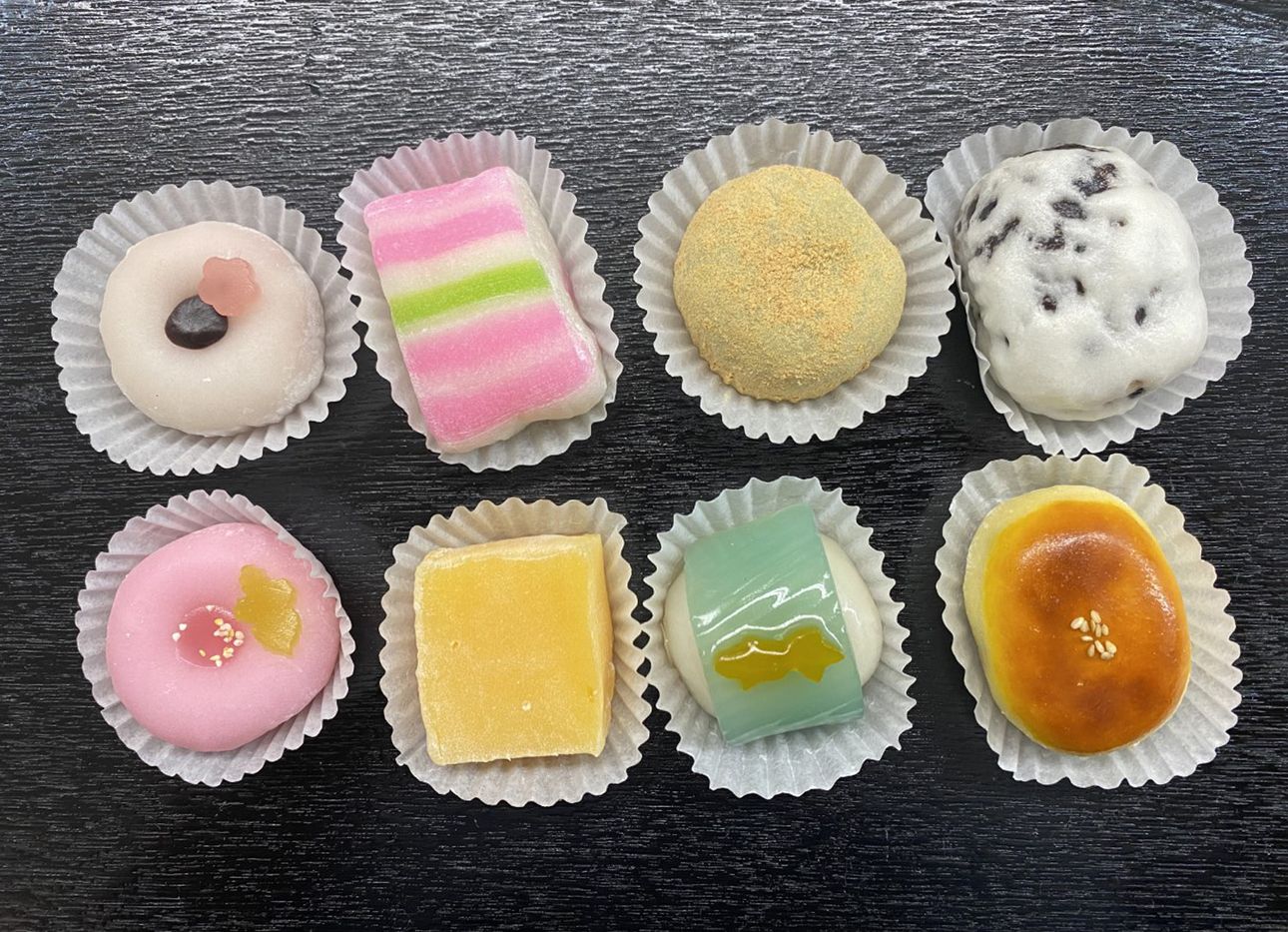
The Skills and Secrets Behind Mochi’s Distinctive Chew
Fugetsu-Do, the oldest business in Los Angeles’s Little Tokyo district, specializes in mochi, a popular variety of Japanese sweets made from a glutinous short-grain rice called mochigome, which is soaked overnight, then steamed and pounded into a soft, sticky dough. A mainstay of Japanese festivals and New Year celebrations, these bite-sized orbs are traditionally filled with white or red bean paste and trace their roots back to ancient Shinto rituals, where they were made as offerings to thank the deities for bountiful rice harvests.
The shop is currently operated by expert confectioner and third-generation owner Brian Kito, who followed the legacies of his grandfather, Seiichi Kito, a Japanese immigrant who founded the business in 1903; and his father, Roy Kito, who emerged from the forced internment of Japanese Americans during World War II to reopen the shop in 1946. Kito has successfully navigated Fugetsu-Do through the past 42 years by adapting to the tastes of the times, incorporating contemporary flavors such as blueberry, peanut butter, and chocolate ganache. Operators of local Buddhist temples and Japanese grocery stores serve as the confectionery’s regulars, and Kito credits social platforms like YouTube and TikTok with introducing new audiences to these venerable, smile-inducing treats, and with helping to carry his family business into the future. Here, Kito speaks about his decades-long journey to becoming a mochi master, Fugetsu-Do’s resilience, and the idiosyncratic texture that gives mochi its addictive and abiding appeal.
“It takes a minimum of ten years to become a shokunin, or master, in the art of making mochi because of the nuances and intricacies of the technique. Even though there are very few ingredients—mainly rice, sugar, and water—the way you mix them changes the taste entirely.
You and I could both start with the same ingredients, but it takes time and practice to achieve exactly the right texture for the dough. I learned by watching not one, but four shokunin, each one specializing in a different type of mochi. These guys were old-school and tough. The first batch I made—I’ll never forget—I worked diligently for hours, only to have the master dump my whole tray in the trash. That experience instilled in me a valuable lesson, however. Fugetsu-Do has survived a hundred and nineteen years because we won’t hesitate to throw away anything less than the best and start over.
We make about thirty to thirty-five different wagashi, with a focus on mochi and manjū, (the baked variety), some of which rotate by season. We source our mochigome from Koda Farms in the San Joaquin Valley of central California, another business run by third-generation Japanese American owners. Their Sho-Chiku-Bai Sweet Rice is definitely the best in the United States. Yet even with the highest quality, there are variances in harvests year-to-year, so we make slight adjustments to the amounts of sugar or water we add to achieve the desired elasticity.
The chew of our mochi is extremely important. So is the texture. Our technique involves balancing the rice, water, and sugar to yield a firm texture that is soft to the touch, yet also elastic, so that our customers can pull and stretch their mochi, adding a very tactile, sticky experience to the taste sensation. Mochi makes you stop and concentrate on chewing. You swirl it around in your mouth five times longer than you do eating anything else, delivering so much more taste out of the experience. It fills your palate with so much more pure enjoyment than something like a chocolate bar.
We also make our own bean paste, with no preservatives. I attribute this to our distinct taste, which is not too sweet, nor does it overwhelm the subtle flavor of the mochi dough. Of course, bean paste is something completely foreign to most Americans. White bean paste is made of lima beans—hardly any American’s idea of dessert—while red beans give anko, the red bean paste, a slightly bitter tone.
Nineteen years ago, I created our strawberry mochi with peanut butter at the center. It’s an obvious ode to peanut butter and jelly. Then, about five years ago, we added a chocolate-and-strawberry mochi. Available year-round, it’s made from a white bean paste mixed with strawberries at the center and topped with a chocolate ganache. There’s nothing too foreign about the taste, and the texture evokes a childlike pleasure. Nobody doesn’t like it.
Certainly, our business weathered years when only our regular customers sought out mochi for Japanese tea ceremonies and holiday celebrations. Fugetsu-Do has actually restarted five times in our history, from when my father went to Heart Mountain, the internment camp in Wyoming, to after the Rodney King riots in 1992, to the homeless crisis we’ve been facing more recently in Downtown L.A. We nearly closed at the start of the pandemic, but I took inspiration from my parents, who withstood the injustices of World War II and kept the business open. Soon enough, in mid-2020, people wanted to get out of the house. Many Angelenos came to Little Tokyo for the first time in their lives as they explored closer to home, and many tried their first mochi. Maybe it was a reaction to the lockdown, but these people showed up with an open mind, wanting to try new things. And so, mochi is having a moment.”